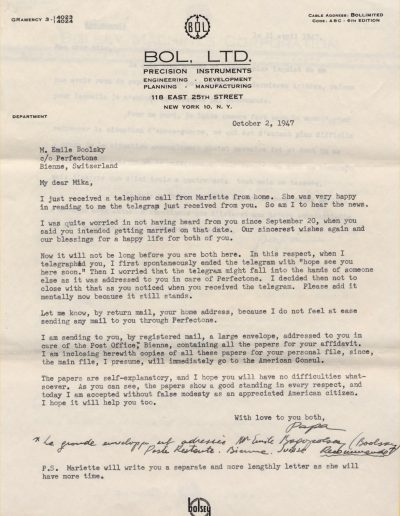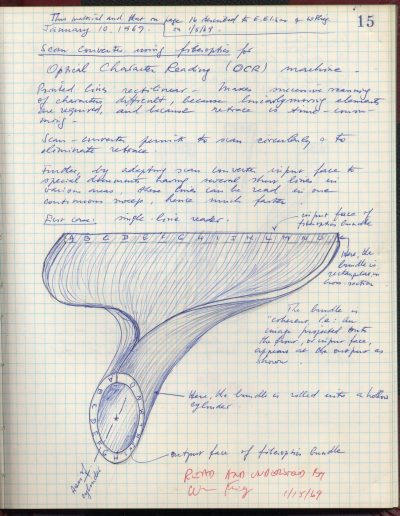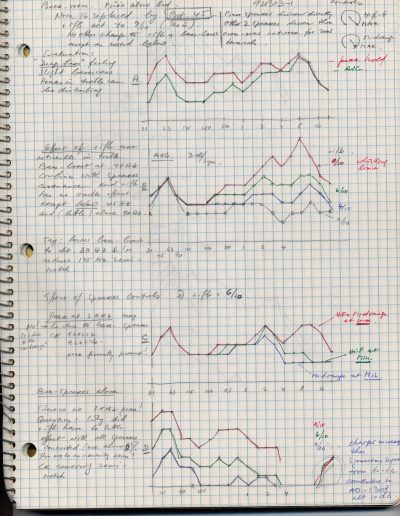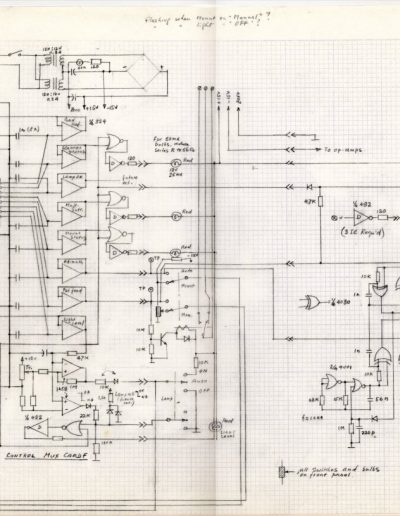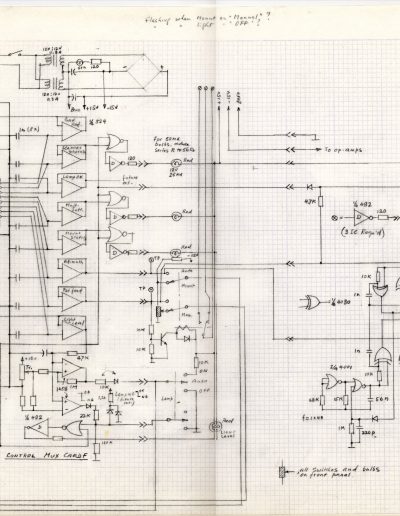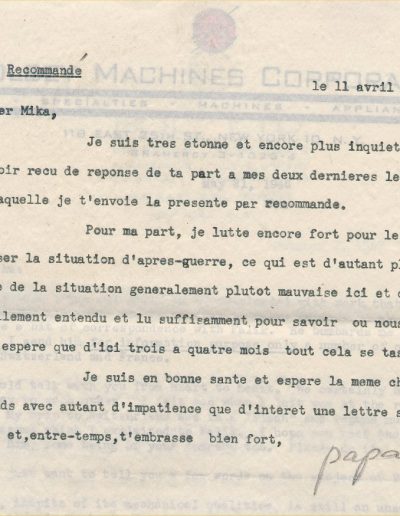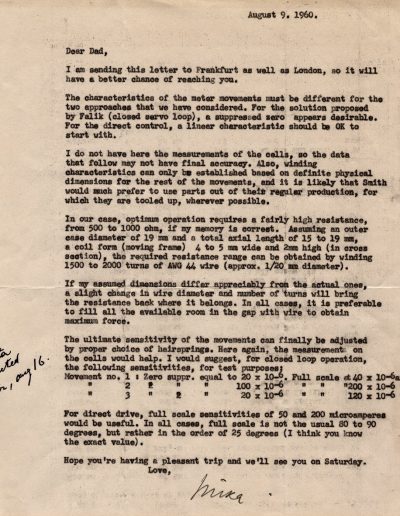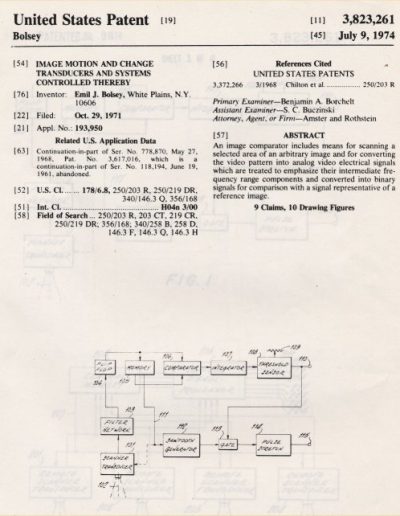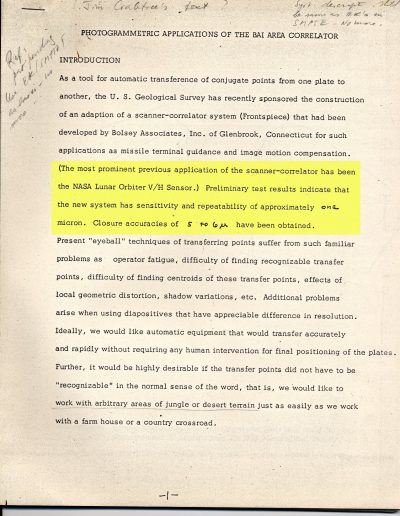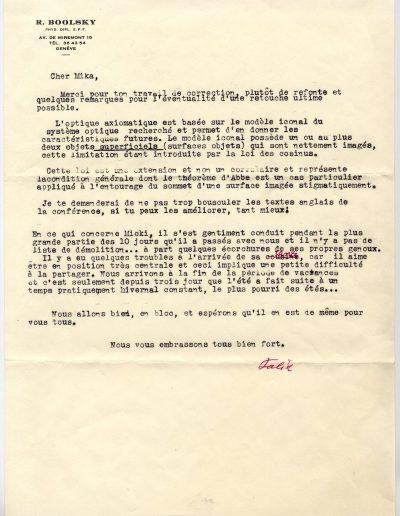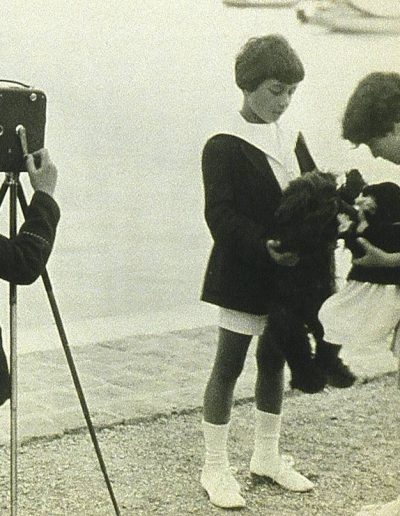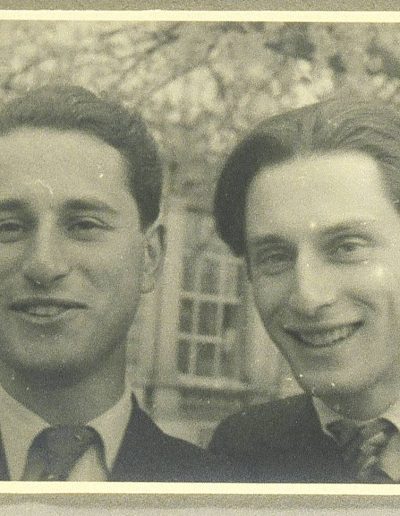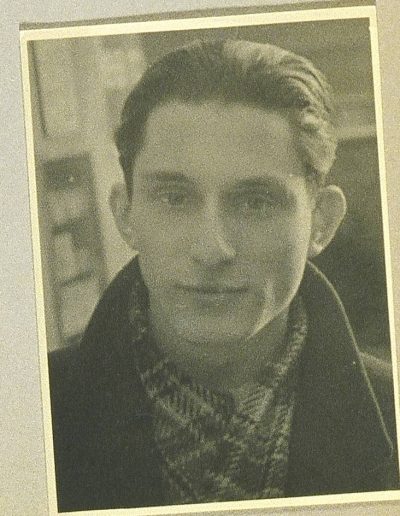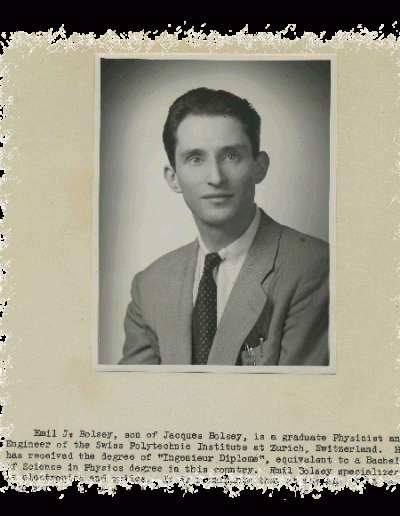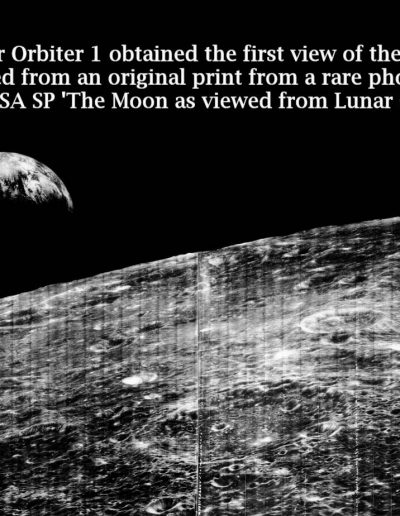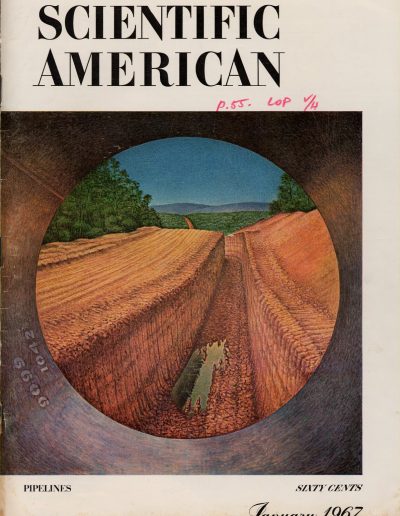
Emil
Emil Bolsey/
Bogopolsky
 Emil Bolsey (Emil Bogopolsky) was born on November 29, 1917, in Geneva, Switzerland. He completed his education in Geneva, and at the Swiss Federal Institute of Technology (Polytechnik) of Zurich. Emil and his brother, Raphael, alternately worked over several years to support each other’s studies at the Polytechnik, and both received first-in-class honors at their graduations.
Emil Bolsey (Emil Bogopolsky) was born on November 29, 1917, in Geneva, Switzerland. He completed his education in Geneva, and at the Swiss Federal Institute of Technology (Polytechnik) of Zurich. Emil and his brother, Raphael, alternately worked over several years to support each other’s studies at the Polytechnik, and both received first-in-class honors at their graduations.
Emil Bolsey served in the Swiss Army during World War II, where he was a member of the Army encryption group. He later commented that while the Allies were deploying spies and special forces in the hunt for Germany’s elusive Enigma coding machine, he had them in pieces on his worktable for repair!

An Enigma-K encryption machine used by the Swiss military.
In September of 1947 he married Margo Dreyer, of Evilard, Switzerland. Soon after, they came to the US, settling in White Plains, New York.
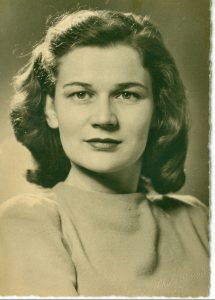
Emil Bolsey was an accomplished electronics, optics and acoustical engineer, as well as a highly competent mathematician, physicist and chemist.
From his teenage years onward, Emil collaborated with his father, Jacques Bogopolsky/Bolsey, inventor of the renowned Bolex, Bolsey and Alpa still and movie cameras. He was lead designer of the Alpa, still considered one of the finest examples of camera design ever achieved. He also designed much of the historic ‘Bolsey 8’, billed at the time as the ‘world’s smallest movie camera’, and reputed to have been a favorite of First Lady Jacqueline Kennedy.

During the 1960s, he was deeply involved in the space race and the US program to put a man on the moon. He invented and was lead designer of the motion compensation technology that allowed the Lunar Orbiter to map the surface of the moon in preparation for the manned landings. The photos, taken from many miles up by a spacecraft traveling at thousands of miles an hour, were so stunningly detailed that mural blowups still decorate several museums and public spaces in the US and elsewhere, including the Smithsonian Air and Space Museum in Washington, DC, and Los Angeles’ Griffith Park Observatory.
Throughout the 60s and 70s he made major, substantive contributions to defense technology, through his work in submarine propulsion and rocket guidance systems, and held numerous patents. Despite this, he was viewed with suspicion by the FBI for his opposition to contributing to the development of offensive weapons.

During this period he came to suspect through contacts in the defense industry that his patent information – so highly classified by the US government that he was forbidden to refer to it in any way – had been passed without his knowledge to major defense contractors, who were using it in violation of his patent rights in the development of a new weapon known as the ‘cruise missile’. In retrospect, it seems likely that the decision had been made to use his work without consulting him because the military viewed him with suspicion. After much soul searching, he decided to follow the lead of other inventors and sue the US government and the Department of Defense to defend his patent rights. This suit occupied much of his time for several years, hobbled by laws that gave the government the power of judge and jury in cases involving national security. Ultimately, he decided that the suit was too costly in time and resources to pursue, but the legacy of his contribution persists to this day in the extraordinary military technology that ultimately made the US the sole superpower of our era.

In the eighties and early nineties, he turned his attention to civilian uses of motion control, and developed an innovative security system, capable of cataloging and ‘memorizing’ the volume of a space, and instantly noticing any change. This system, which was never marketed, was notable for its efficient and minimalist use of technology – while other designers were using cumbersome, refrigerator-sized computers to achieve the same ends, his entire unit could be mounted almost invisibly on a ceiling.
Always on the lookout for new areas of interest, in his later years, he turned his attention to acoustics and the technology of sound reproduction, developing a series of very small speakers capable of extraordinarily accurate sound reproduction.

He was a lover of Mozart and Bach, and had an encyclopedic knowledge of classical music. He was also a lover of animals. He firmly believed animals capable of thought and emotion and proved it to his satisfaction in his relationships with a constant stream of house pets. He enjoyed any activity that required concentration, analysis and problem solving, be it chess, mathematics or car repair. In his youth he enjoyed long bike rides, and skiing. As he became older, he gave up these activities, but found pleasure in long, daily walks.

Emil Bolsey was the second son of Jacques Bolsey/Yacov Bogopolsky, of Astrakhan, Russia and Sima Tcherniak, of Kherson, Ukraine, and brother of Raphael Boolsky, of Geneva, Switzerland, a well-known physicist and inventor in his own right.
Emil – Documents

Emil – Photos

Additional material to come.


